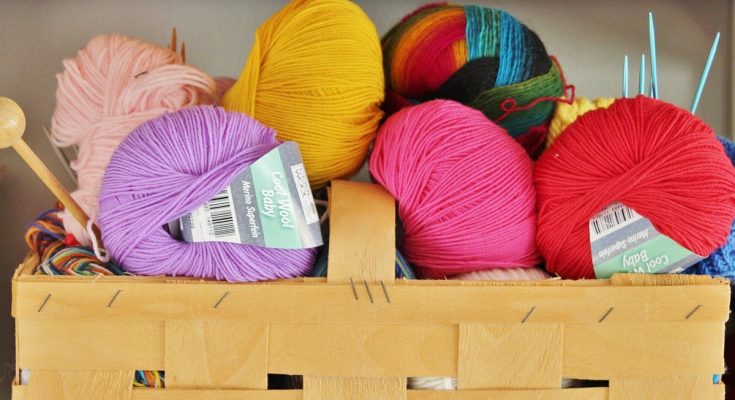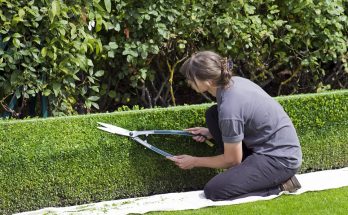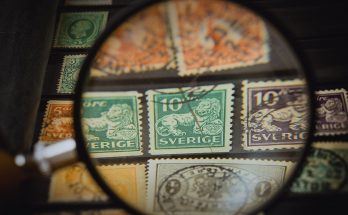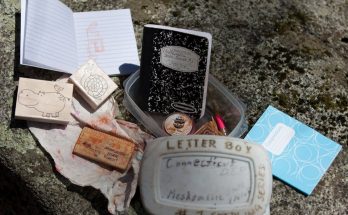Knitting is a process where at least two needles are used to loop yarn into a series of interconnected loops to create a garment or some type of fabric. These loops, which are called stitches, are created in a line or tube, and the resulting product will have a number of consecutive rows of inter-meshing loops.
Unlike weaving, knitting does not require a loom or any other cumbersome equipment. This makes it easy for the knitter to bring their knitting with them.
There are many different stitch types that can be used, and the choice of needles and yarn will also have a big impact on the resulting product.
Knitting as a hobby declined significantly in the late 1900s, only to be revived again in the following century. The new boom in knitting is partly fueled by the growth of the internet, which has made it easier for knitters to keep in touch with each other and share information, including knitting patterns and how-to tutorials.
Several celebrities have come out and professed to be avid knitters, including Ryan Gosling, Christopher Walken, Kate Moss, George Lucas, Keifer Sutherland, Russel Crowe, Cameron Diaz, Dakota Fanning, Julia Roberts, and Winona Ryder.
A newly formed branch of the knitting hobby is yarn bombing; the placing of knitted pieces in public spaces without permission. In a broad sense, it is similar to graffiti.
The hand knitting process
Casting on
The first step is the casting on, where the initial stitches are created on the needle. There are different ways for doing this, and the initial stitches can for instance be made in a way that provides the finished product with decorative edging.
Which hand?
In English style knitting, the yarn is held in the right hand.
In Continental style knitting, the yarn is held in the left hand.
Needle insertion
Knitting through the front of a stitch is known as Western knitting.
Knitting through the back of the stitch is called Eastern knitting.
Going through the front of a knit stitch and the back of a purl stitch is known as Combination knitting.
Casting off
When the piece is finished, the remaining live stitches are secured through a process known as casting off. The stitches are looped across each other, making it possible to remove them from the needle without unraveling them.
Early knitting history
11th century BCE
The oldest known knitted artifacts are socks found in Egypt. These socks have been dated to the 11th century BCE. Since these socks have been made using complex knitting techniques, it suggests that knitting was probably invented much earlier and then gradually developed to this high level. The socks are of a very fine gauge, sports complex colorwork and have partly been made using pur stitch.
Knitting might have evolved from the nålbindning technique, a process where a multiple loop fabric is created using just one needle and thread. The oldest known examples of textile created using nålbindning is from circa 6500 BCE and was found in the Nehal Hemar cave in Israel. In Denmark, an example of nålbindning textile dated to circa 4200 BCE was found in the fishing village Tybring Vig.
Early knitting in Europe
The earliest known knitted items in Europe were knitted by Muslim knitters employed by Christian royal families in Spain. Prominent examples of such items are the knitted cushion covers and gloves placed in the tomb of Prince Fernando de la Cerda, who died in 1275 AD. The cushion cover was knit at approximately 20 stitches per inch – not an easy feat – and displayed the family armory and the Arabic word baraka (“blessings”). Knitted items from the 13th century have also been found in tombs in the royal monastery Santa María la Real de Las Huelgas near Burgos in Spain.
If we go much further up north, a Votic knit fragment was found during excavations in Estonia. This fragment was dated to the late 13th century. It is knit in a stranded pattern in three colors and is believed to have formed a part of a mitten cuff.
In the 14th century, paintings depicting the Virgin Mary knitting begin to appear in Europe. There is for instance Tomasso da Modena’s “Our Lady Knitting”. This painter lived circa 1325-1375.
Spreading the trend
By the 14th century, the use of knitted everyday garments seem to have been widespread in Europe. Fragments of knitted clothes from this century have been found in many different spots, including plenty of locations in Northern Europe, such as London, Oslo, Amsterdam and Lübeck. In Lübeck, a knitted child’s cap made from wool has been very well preserved and dated to either 14th or 15th century.





